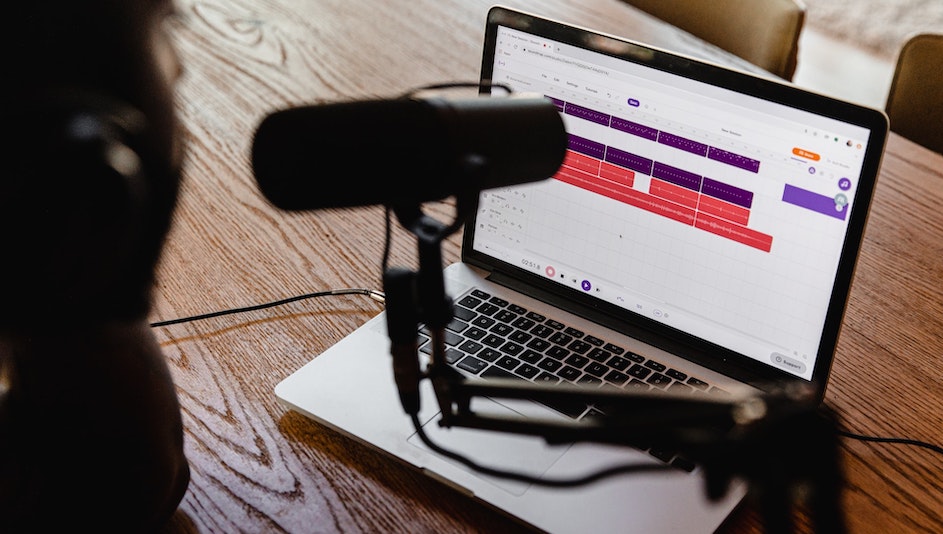
Newsletter
Newsletter
This week, we highlight case studies of how audio has grown audiences, engagement and revenue at Tortoise and the Washington Post.
12th October 2022

In the Pugpig weekly media bulletin, Pugpig’s consulting services director Kevin Anderson distills some of the best strategies and tactics that are driving growth in audiences, revenue and innovation at media businesses around the world.
In last week’s bulletin, we asked what podcast success looks like, and this week, we can begin to answer that question with examples from publishers who are succeeding with podcasts in terms of growing audiences, deepening engagement and increasing revenues. After launching its podcasts a year ago, Tortoise’s audio offering is in the black, co-founder Katie Vanneck-Smith told the Press Gazette. It was a pivot from their original long-form text model, with articles that took on average took 25 to 30 minutes to read. They weren’t hitting the engagement targets that they wanted so in a classic case of product development, they asked their users how the preferred content: They told Tortoise that they listened rather than read.
Sign up to get the Media Bulletin in your inbox.
After gleaning that actionable bit of user intelligence, they launched podcasts, and their audience for audio has tripled over the last year, according to the Press Gazette. And that’s not simply growth from a small base. Their weekly Slow Newscast now has 3 m listeners, and with those kind of numbers, it’s been easy to monetise that audience. Vanneck-Smith told attendees at Media Voice’s Publisher Podcast Summit that audio has proven their single biggest driver for new subscribers.
As if that wasn’t enough to prove the model, they are also attracting a younger audience. The average age of Tortoise members is 39, but the average age of their podcast listeners is 10 years younger. And they have just announced a multi-year with Sky Studios to adapt their podcasts into film and television series.
In another audio success case study, The Washington Post debuted a newsletter last year called “The 7”, which draws from the paper’s top seven stories for the day. When it launched, they also had an automated text-to-speech audio version. It’s designed as a quick 3-minute read or listen of news each day for the busy people in the US capital. Now, they are launching a version of the newsletter that covers local news as well. In addition to expanding the newsletter product offering, the Washington Post knew from their analytics that there was high engagement with the automated audio version of the newsletter. The Post found that people were three times more likely to listen to the text-to-speech audio version of The 7 than other articles with the same feature. Based on that, they are launching a podcast version of the newsletter. It shows how attention to data, either user research or analytics, can show the way to new product offerings that lean into audience behaviour.
One of the offerings that our consulting services team will provide is user research and analysis of your analytics to highlight ways to iterate your current products. If you’d like to discuss how we help you increase engagement and revenue with product development consulting, get in touch at info@kaldorgroup.com.
Late last year, Independent News and Media’s CEO Zach Leonard outlined the three pillars of the group’s strategy:
Last year, the overall strategy had delivered 30% revenue YoY growth, and key to their success has been their Anonymous-to-Known, or simply A2K, strategy. The Independent now has 11 sources of registration , Jo Holdaway, Chief Data & Marketing Officer, told the audience at WAN-IFRA’s recent World Media Congress. This includes their Pugpig app, e-commerce, events, newsletters and even petition signing. As with an increasing number of publishers looking to open up their conversion funnel, they are using a registration wall to drive higher engagement and a higher propensity to subscribe. Registered users are 11 times more engaged than anonymous users, and subscribers are 62 times time more engaged. And the strategy has increased registrations from 20,000 to 200,000 after they put a registration gate on all of their content, Holdaway said at the recent Press Gazette Future of Media Technology conference.
The strategy also delivers a wealth of first-party data that they have used for targeted conversion messaging, and first-party data is increasingly important with the coming clampdown on third-party data. Rolling out the registration gate on all content required board-level approval and solid execution, but the results are clear. With increased revenue, they are investing more in content, talent and international expansion.
As we do interviews for our upcoming State of the Digital Publishing Market report, I’m hearing publishers and audience development leaders who are placing less focus on social media. Certainly, they might be exploring mobile, vertical video, but that format is sometimes focused on their app rather than simply for platforms such as TikTok and Instagram. Driving this is a clearer sense of the strategic focus on known users and subscriptions rather than anonymous, relatively lightly engaged masses that come from social media. If social media can play a role in their subscriber acquisition strategies, that’s great, but the use of social media is more focused on their own editorial and business goals and not simply in terms of growing audiences on social as a goal unto itself.
Publishers have struck a Faustian bargain with social media and other Big Tech platforms, says David Cohn, the co-founder of Subtext (who we mentioned last in last week’s bulletin) on Poynter. Publishers hunger for the reach that Big Tech promises, only to find after striking that deal that the platforms then clamp down on organic reach, forcing publishers to pay for reach that once came free.
Rather than ceding your editorial and strategic vision to platforms, Cohn has a few suggestions to make sure that the relationship that publishers have with platforms is mutually beneficial.
In short, David is advocating that the seduction of scale, the large audiences that a quick viral hit can deliver, is no substitute for building direct relationships with your audiences and your advertisers. Just as the Independent found, transient, anonymous digital audiences are not nearly as valuable as known audiences who you learn how to serve and how to convert.
Here are some of the most important headlines about the business of news and publishing as well as strategies and tactics in product management, analytics and audience engagement.

Newsletter

Newsletter

Newsletter

Newsletter

Newsletter